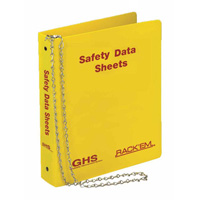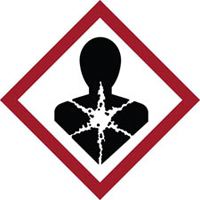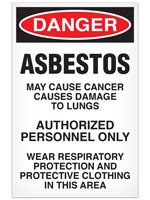



Find all of your laboratory and workplace safety supplies at Safety Emporium!
 Necrosis |
 Glossary Index |
 Nephrotoxin |
| MSDS Topics |
Free Sites | FAQ's | Regulations | Glossary | Software | Suppliers |
| Books | Forum | Poll | Fun stuff | Quiz | Store | |
| Understand your MSDS with the MS-Demystifier | Search ALL our MSDS info | |||||

Get your SDS binders, centers and more from Safety Emporium.
A neoplasm is an abnormal growth of tissue that has no useful function. A synonym is "tumor".
Neoplastic is the adjective form of the word. For example a neoplastic disease is one that causes tumor growth.
Neoplasms may be benign (no ability to spread to other parts of the body) or malignant (cancerous).
The 2012 version of the OSHA Hazard Communication Standard, 29 CFR 1910.1200, requires manufacturers to perform a hazard classification on the potentially hazardous chemicals that they sell. Any hazards found in this process much be disclosed on the label and Safety Data Sheet.

Get your GHS-compliant labels and signs from Safety Emporium.
The health hazard classification process is described in Appendix A of HCS 2012. Paragraph A.6.1 of Appendix A defines a carcinogen as follows:
Carcinogen means a substance or a mixture of substances which induce cancer or increase its incidence. Substances and mixtures which have induced benign and malignant tumors in well-performed experimental studies on animals are considered also to be presumed or suspected human carcinogens unless there is strong evidence that the mechanism of tumor formation is not relevant for humans.
Classification of a substance or mixture as posing a carcinogenic hazard is based on its inherent properties and does not provide information on the level of the human cancer risk which the use of the substance or mixture may represent.
In summary, HCS 2012 treats any substance which causes neoplasms (tumors) to be a presumed or suspected human carcinogen without respect to the actual risk it may or may not pose. These substances will bear a health hazard pictogram like that shown on the right on the label (and, optionally, the SDS). Both the label and SDS will have accompanying hazard statements as well as precautionary statements.
Chronic (long-term) exposure to certain chemicals can result in the formation of neoplasms. While not all of these tumors are cancerous, benign tumors have the potential to interfere with vital body functions (for example, growing large enough to disrupt blood flow to an organ) or become malignant.
Section 11 (toxicological information) of a material's Safety Data Sheet will indicate if the material is known to cause tumor formation. Obviously, limit your exposure to any such chemical. This includes reducing the usage of such chemicals in your workplace as well as using proper personal protective equipment (PPE) such as gloves and respirators. And always utilize proper engineering controls such as fume hoods as these protect all workers, not just the end users. Section 8 (exposure controls/personal protection) of the SDS will contain information on these protective measures.

Signs, training materials and supplies from Safety Emporium can help ensure a safe and healthy workplace.
See also: carinogen, carcinoma, cytotoxin, malignant, metastasis, mutagen, teratogen.
Additional definitions from Google and OneLook.
Entry last updated: Friday, January 6, 2023. This page is copyright 2000-2025 by ILPI. Unauthorized duplication or posting on other web sites is expressly prohibited. Send suggestions, comments, and new entry desires (include the URL if applicable) to us by email.
Disclaimer: The information contained herein is believed to be true and accurate, however ILPI makes no guarantees concerning the veracity of any statement. Use of any information on this page is at the reader's own risk. ILPI strongly encourages the reader to consult the appropriate local, state and federal agencies concerning the matters discussed herein.